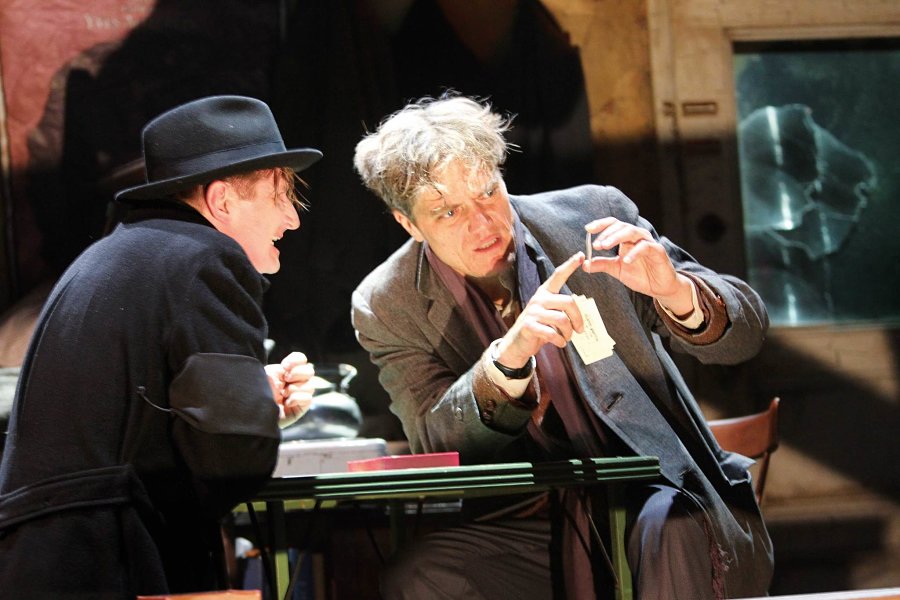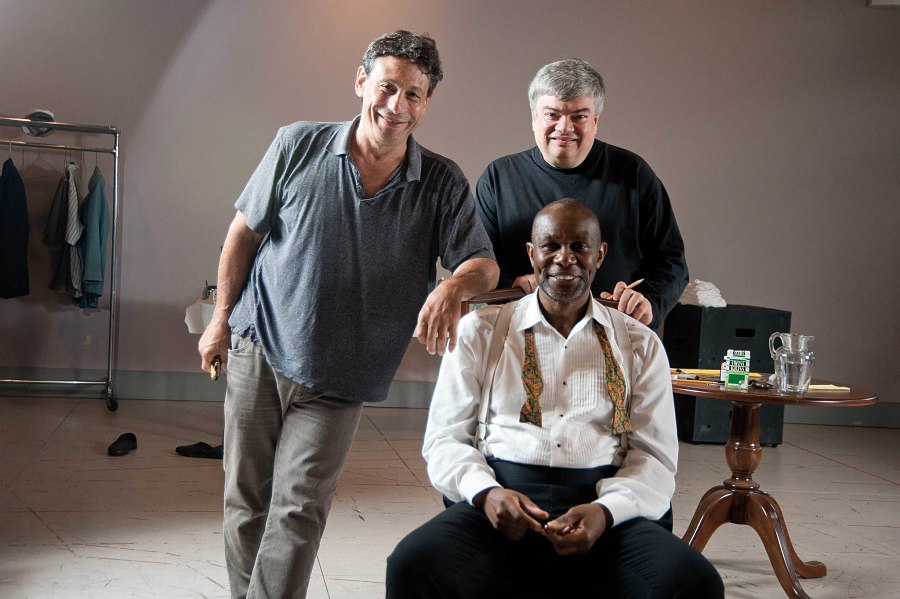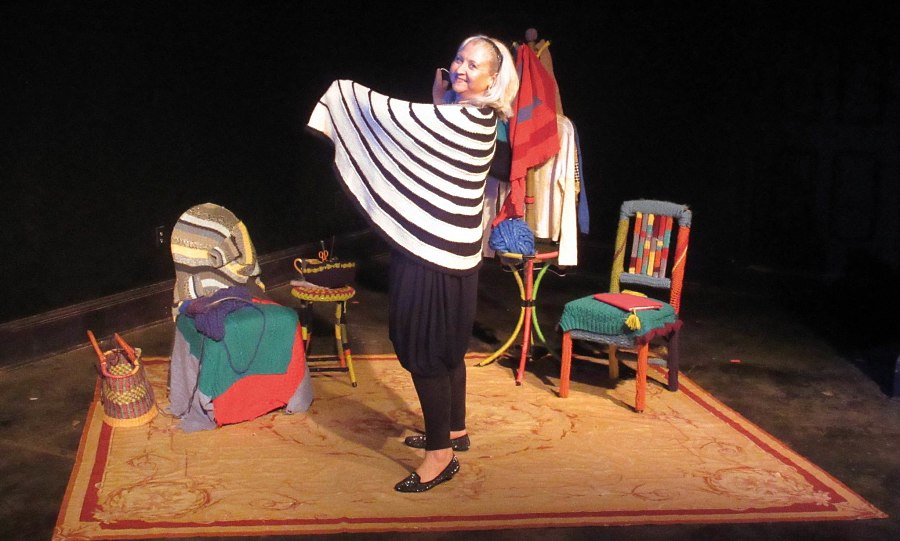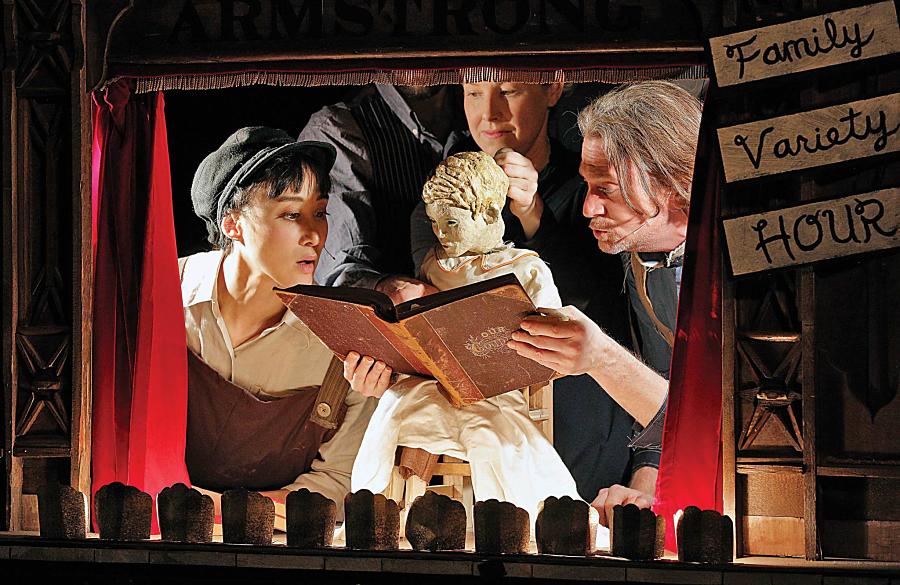Some years ago at the MacDowell Colony, I experienced a temporary speech impediment. Each morning we colonists would fuel up on eggs, pancakes, or whole-grain muffins before shuffling off to our cabins. There were the usual pleasantries around tables, peers inquiring about each other’s activities. When asked, I would stammer, “I’m a p-playwright.” This mumble was quickly followed by the caveat that I was actually a theatre critic and editor at Time Out New York, but I was here, to, uh, revise a play and some opera libretti. This awkward confession provoked different reactions—in some, a faint stiffening of the jaw muscle; in others, a blank stare; or perhaps a lopsided smile of vague condolence. The whole thing felt like a double betrayal—of the artists with whom I shared a table, and of myself.
All nonsense, of course. Critics are writers, too, and there is a rich tradition of having it both ways—building bodies of commentary as well as plays, libretti, lyrics, or prose. The barriers keeping artists and critics separate seem pretty arbitrary when you think about it. Still, you could argue they serve a practical purpose: Critics are insulated from conflicts of interest; artists have the freedom to create in a judgment-free zone.
But what if artist and critic are the same person? Can the critic write creatively and seriously, with an eye to actual production, without choosing sides?
Personally, I’ve overcome the MacDowell stutter: In January, The Scarlet Ibis, an opera I wrote with composer Stefan Weisman, opened at the New York City performance space HERE as the main event in the PROTOTYPE festival, greeted by sold-out houses and great reviews (bless those critics’ hearts!). In April I learned that my first full-length play, Otherland, was a finalist at the National Playwrights Conference at the Eugene O’Neill Theater Center, making it through a gauntlet of more than 1,300 other scripts. Although I’m not about to quit my day job, this encourages me to keep writing and submitting.
For the record, Otherland will continue to be developed by Gingold Theatrical Group; there are plans to tour Scarlet Ibis nationally; and more operas are planned in seasons ahead. Over at the New Play Exchange, I’ve uploaded shorter works: a monologue in which Aristotle explains the mechanics of comedy; a fantasy on why Coleridge never finished “Kubla Khan”; and a two-hander about social media and oversharing. The genie is out of the bottle, and he’s got a lot of deadlines.
Whenever I feel a twinge of doubt about pursuing this double track, I have only to remember the distinguished history of the critic-artist. George Bernard Shaw is the prime example, a feisty reviewer-advocate who had some notable success in the creative sphere. His immediate successor at the Saturday Review, Max Beerbohm, was not only a peerlessly witty critic but also an author of brilliant comic novels, short stories and caricatures. The English tradition continued in the 1960s and ’70s with Kenneth Tynan’s 11-year post as the National Theatre’s dramaturg, after which he created the notorious erotic revue Oh, Calcutta! In recent years, Evening Standard reviewer Nicholas de Jongh forsook his aisle seat for playwriting (his period piece Plague Over England made it to the West End in 2008).
And there has been plenty of crossover on our side of the Atlantic. Brecht translator and long-form critic Eric Bentley has several plays to his credit, some variations on Sophocles and Arthur Schnitzler. In the 1940s and ’50s, Walter Kerr worked variously as a director, lyricist, and book writer on half a dozen Broadway shows. Ex–New Yorker critic John Lahr took home a Tony Award in 2002 for his work “constructing” the musical memoir Elaine Stritch: At Liberty. American Repertory Theater founder and critical heavyweight Robert Brustein adapted several classics for ART, and has written a handful of original full-lengths, including a trilogy about William Shakespeare.

Michael Feingold, former head critic at the Village Voice and now online columnist at TheaterMania.com, has been translating European giants such as Brecht, Schiller, and Ionesco for more than 40 years. His fluid and witty translation of Ionesco’s dauntingly weird The Killer was one of the high points of Theatre for a New Audience’s past season. Feingold also writes plays, one of which—provocatively titled Ragozine—he expects to workshop this year. “Working in the theatre may seem, superficially, to compromise your objectivity as a critic,” Feingold admits. “In practice it actually does the opposite—it teaches you how hard it is for artists to achieve what they set out to accomplish, a lesson you remember very strongly when you’re weighing other people’s achievements.”
You want more examples? New York–based Italian journalist Mario Fratti reviews for various European newspapers while also producing a stream of new plays (his translation of Federico Fellini’s screenplay for 8 ½ was used for the book of the Broadway musical Nine). My colleague at Time Out New York, Adam Feldman, not only covers cabaret, he’s been known to take the stage and warble a show tune. American Theatre’s own Rob Weinert-Kendt and Eliza Bent have sidelines as composer-lyricist and playwright-performer, respectively.
And let us never forget that George S. Kaufman was theatre editor at the New York Times drama desk, after stints as a reporter and reviewer, until 1930, all the while moonlighting as a farceur and script doctor. (How the Times has changed: If a critic there so much as nods at a playwright in the street, they are forbidden from reviewing that person’s work. The Gray Lady keeps her critics in bubble wrap.)
Of course, conflict of interest is a genuine concern. What’s to stop a critic from extravagantly praising a company that he hopes will one day produce his play? Given our access, why not invite an artistic director to lunch, then shove a manuscript into her hands before the soup arrives?
Terry Teachout, who travels around the country reviewing shows big and small for the Wall Street Journal, is keenly aware of the boundaries. Last year, his first play, Satchmo at the Waldorf, enjoyed a four-month run Off Broadway at the Westside Theatre, and it will be produced this season in Beverly Hills, Chicago, Colorado Springs, San Francisco, and West Palm Beach (where he’ll also direct the show). Teachout (also an opera librettist) says that his one-man show about jazz icon Louis Armstrong emerged from research for the 2009 biography Pops. He says the transition to fiction wasn’t much of a stretch.

“Journalists are good at assimilating large amounts of unfamiliar material,” Teachout notes. “I went to work on the play in January 2010 and had started at the Journal in 2003, so I’d spent seven years going to two or three plays a week. While I hadn’t imagined myself writing a play, I’d spent a lot of time thinking about how plays work or don’t work.”
Teachout scrupulously avoids conflict. “I never approach anybody about the play,” he insists. “My agent at Abrams Artists does the approaching. Since I review regional theatre, I don’t feel like it’s a good idea to hawk my play.” Also, once a company has agreed to produce Satchmo, Teachout and the Journal agree on a “blackout” period during which he will not cover that company’s work. (He preferred not to specify the length of the blackout period.)
Inspired by this Charles Kuralt of reviewers, I decided to hit the road (virtually) to find other colleagues across the country who were also engaged creatively. Through the American Theatre Critics Association, I asked to hear from anyone doing the critic-artist two-step—and the next day I found several dozen responses in my inbox. I heard from part-time and full-time critics in Dallas, Cleveland, Phoenix, Philadelphia, Chicago, Detroit, Washington, D.C., Indianapolis, Miami, New York, San Francisco, Austin—all the way to Port Townsend, Wash. (pop. 9,355). I felt like I’d stumbled into a Mickey Rooney movie in which the whole town turns out when I yell, “Hey kids, let’s put on a show!”
Elaine Liner of the Dallas Observer and Cleveland blogger-critic Christine Howey both write and perform their own material in solo shows. Howey, whose monologue about her transgender journey, Exact Change, was performed as part of Theatre Communications Group’s 2015 conference, says being a critic makes her open to evaluations of her own work. “I actually enjoy reading thoughtful criticism, since I know how much effort it takes,” Howey says. “And I have learned from some of my reviews and incorporated some ideas during the development of Exact Change.”
For her part, Liner sees zero conflict with her beat. “I’m not auditioning for roles at local theatres and never will,” she maintains. “Also, I’ve mostly performed my one-woman show, Sweater Curse, outside of Dallas. I premiered it at the Edinburgh Fringe for a reason—nobody knows me over there!”

Anonymity is not an option for Robert Faires of the Austin Chronicle, but he continues to act and direct as he covers his scene. Professionally trained opera singer Kathryn Kitt reviews for Broadwayworld.com. Kenneth Jones, former managing editor of Playbill.com, is not a critic, but his play Alabama Story had its world premiere earlier this year at the Pioneer Theatre Company in Salt Lake City, Utah. In Washington, D.C., Susan Galbraith juggles reviewing for the website DC Theatre Scene and being a writer-director with Alliance for New Music-Theatre. And I’m sure that by now you are quite offended that I didn’t mention your credit as an actor/singer/director/dramaturg—sorry! (Would someone please start criticartist.org?)
Clearly, everybody’s doing it. But, to ask a question only a critic would raise: Is any of it good? Does writing regularly about theatre make you a stronger playwright? I feel I’ve benefited from soaking up others’ work for years; I’m in a constant state of inspiration. (Sometimes I have to tell my own characters to pipe down so I can focus on the show.) My defense has always been that I was an artist—acting and directing Off-Off Broadway—before I became a critic. But there has to be some level of talent to nurture in the first place. If you have an ear for dialogue, an eye for structure, a feel for storytelling, reviewing can sharpen those gifts.
One of the hoariest knocks against critics is that we’re frustrated artists—to which I reply, “Artists should be frustrated!” Vibrant art emerges from anger and struggle. Critics and artists have that in common, at least. We both fight to be heard above the crash and scream of mass entertainment. We know there’s a tremendous amount of competition for a diminishing number of slots. We constantly worry that the audience is shrinking and escape plans must be made. It’s enough to turn a critic into a playwright, or vice versa—not so much a case of the grass being greener as the grass being less burnt and blasted. Put it more positively: If you have a talent for writing on one side of the footlights, why not join two sides of your brain?
Now if you’ll excuse me, I think I figured out how to crack that scene…
David Cote is theatre editor and chief drama critic of Time Out New York, and, yes, a playwright and librettist.


